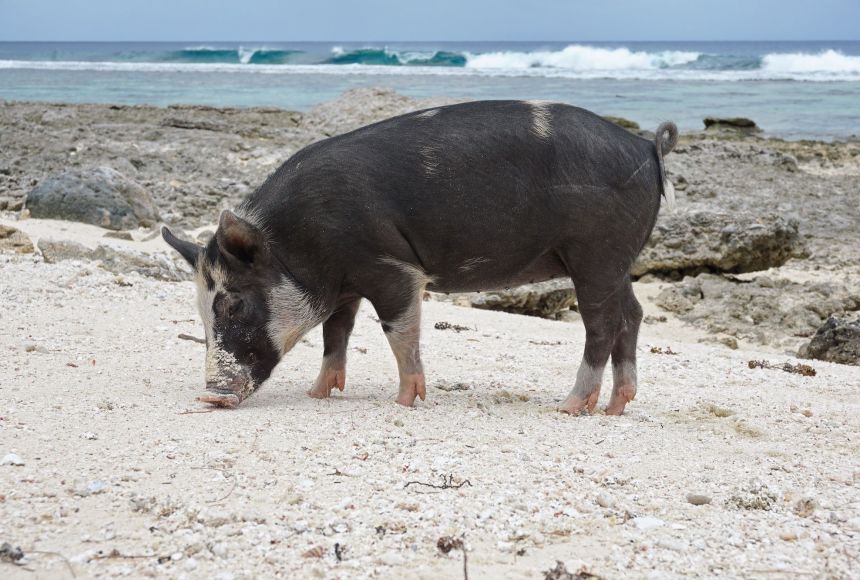Invasive species can damage native habitats, spread diseases, cause extinctions, and require a lot of cleanup. But what exactly are they?
An invasive species is any living organism that is not native to a particular area. It can cause economic harm or environmental harm to an ecosystem, or it can be damaging to human health.
Invasive species can quickly crowd out native species and take over resources, such as food and water. They often lack predators, competitors, or parasites in their new home. This means that the populations of invasive species can grow quickly without natural enemies to keep them in check. In many cases, native species have not evolved natural defenses against the new invader. This makes them easy prey.
But not all introduced species are invasive. In fact, they can sometimes have benefits. For example, common foods, such as potatoes and tomatoes, come from plants that were introduced to the rest of the world from the Americas. An organism is only considered to be invasive if it causes harm.
Human Influence
Invasive species are almost always spread by human activity. The increase in tourism and trade has meant people and goods can move all over the planet. They often take invasive species with them, either accidentally or intentionally.
Early explorers introduced many invasive species, such as dogs (Canis familiaris), cats (Felis catus), pigs, and rats. Norway rats (Rattus norvegicus), also called brown rats, were originally from China. They spread throughout the Pacific Islands during the 1700s by stowing away on ships. Norway rats damage ecosystems by eating native species and spreading deadly diseases. Invasive feral pigs (Sus scrofa) live on the United States Hawaiian islands. Early Polynesian settlers might have brought them. Feral pigs dig up vegetation, spread invasive plants, and contribute to soil erosion.
In some cases, government officials have encouraged the introduction of invasive species. The Asian plant kudzu (Pueraria montana var. lobata) was introduced to the United States during the 1876 World's Fair in Philadelphia, Pennsylvania. In the 1930s, the government encouraged people in the southern United States to plant the fast-growing vine. They hoped this would prevent soil erosion. But the kudzu quickly grew out of control, earning it the name "the vine that ate the South."
Other times, invasive species were introduced to control pests. For example, the cane toad (Bufo marinus) is native to South and Central America. It was introduced to Australia in the 1930s to eat pests in sugar cane plantations. Unfortunately, the plan backfired, and cane toads became pests themselves. The oversized toad is famously toxic and can be deadly to predators who try to eat it.
Invasive Species Are Making Themselves at Home
Today, we have a better understanding of what happens when we move plants and animals outside of their natural habitats. We now try to prevent spreading organisms beyond their ecosystems. Nonetheless, we continue to spread invasive species around the globe through trade and travel.
For example, the brown tree snake (Boiga irregularis), native to Australia and Indonesia, has caused the extinction of some birds in the U.S. territory of Guam, an island in the South Pacific. It has also caused widespread power outages by climbing electrical lines. It is thought to have arrived in the 1950s on military aircraft and in cargo. Meanwhile, in the U.S. Florida Everglades, Burmese pythons (Python bivittatus) are causing trouble. These snakes make popular pets but grow to be incredibly large. Owners released them into the wild, in places like the Everglades, to get rid of them. The Burmese python has no natural predators in Florida, so its population is thriving. They even interbreed with local snakes to form a super-resilient hybrid.
Similarly, species of lionfish, native to the South Pacific and Indian Ocean, have quickly spread throughout the Atlantic Ocean, Gulf of Mexico, and the Caribbean Sea. Lionfish prey on native fish species. They cause economic damage to fisheries and put coral reef ecosystems at risk.
What Can Be Done?
Preventing invasive species is the best strategy for controlling them. Most countries have strict rules about what can and cannot be brought across their borders. Education is also important.
There are also other approaches to managing current invasive species. Some invasive plants can be turned into paper. Invasive fish, such as lionfish, can be eaten as a delicacy (complete with the catchy slogan, "If you can't beat 'em, eat 'em").
Whether by accident or design, the problem of invasive species has been caused by humans. But we can also be part of the solution.
So next time you are in Florida, why not try a lionfish fillet? And whatever you do, do not release your pet Burmese python into the wild.
